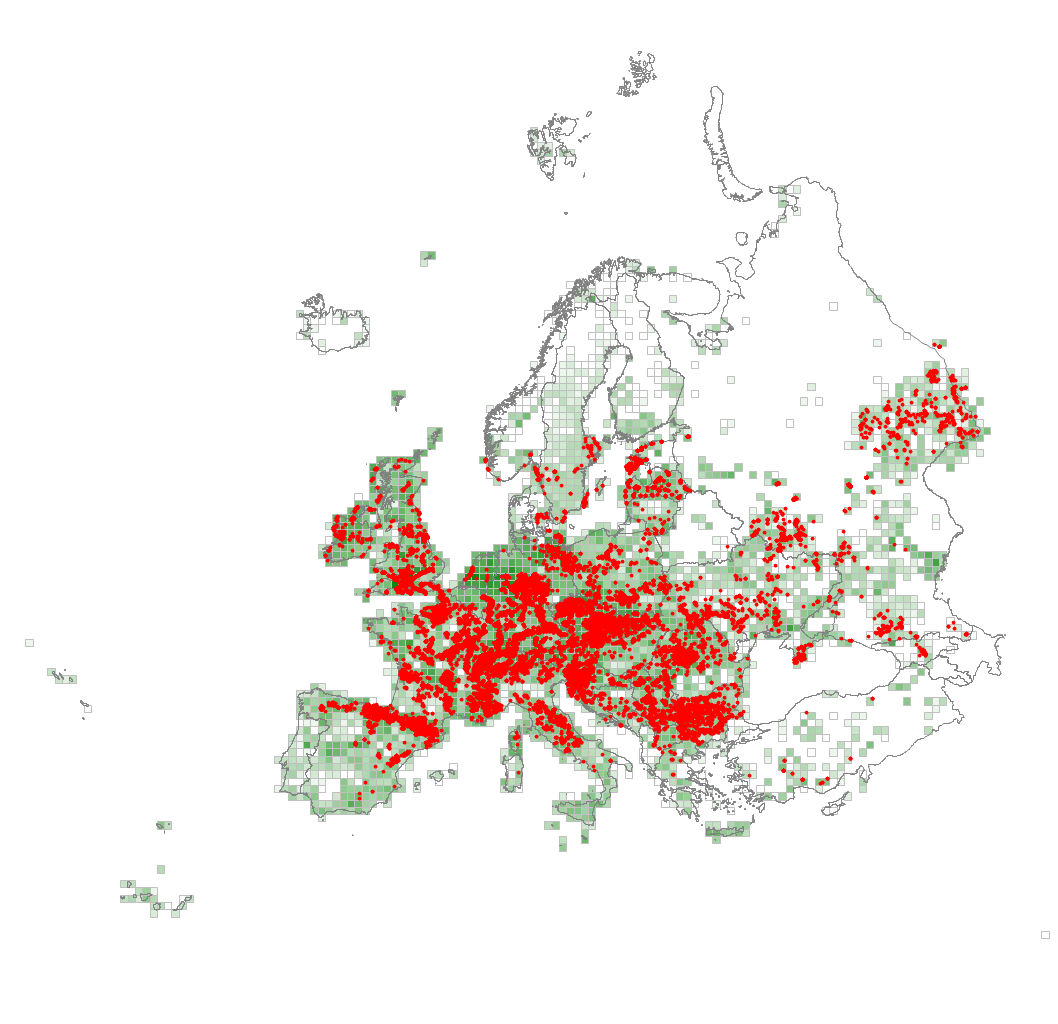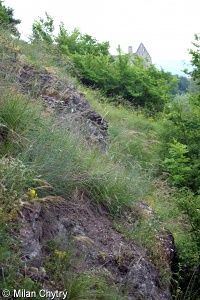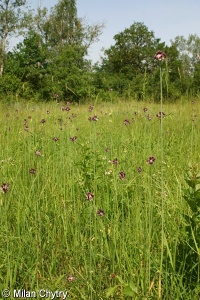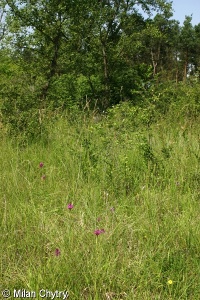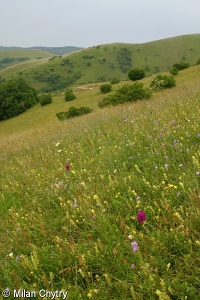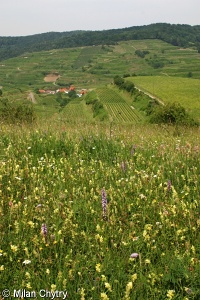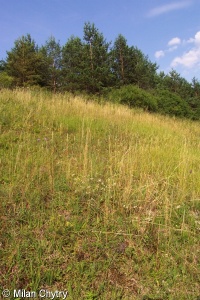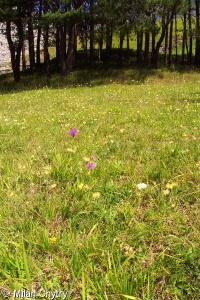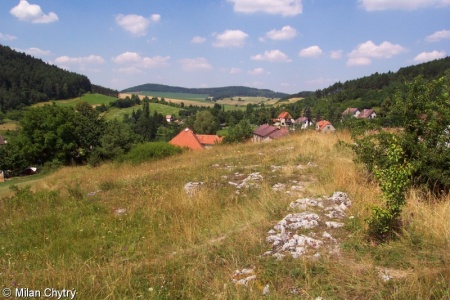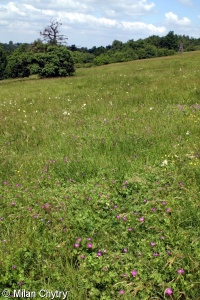R1A Semi-dry perennial calcareous grassland (meadow steppe)
Semi-natural grassland on deeper and not so drought-prone, nutrient-poor, base-rich soils over limestone throughout the lowlands and submontane belts of submediterranean to hemiboreal Europe. Generally closed and dominated by mixtures of graminoids and forbs, often extremely species-rich, with many rare plants and sometimes striking contingents of orchids and varying much across the large range with different sets of continental or submediterranean companions. Dependent on extensive grazing, usually with sheep, or on an annual mowing, and often developed over centuries of traditional pastoralism, contributing to some striking cultural landscapes.
Chytrý M., Tichý L., Hennekens S.M., Knollová I., Janssen J.A.M., Rodwell J.S. … Schaminée J.H.J. (2020) EUNIS Habitat Classification: expert system, characteristic species combinations and distribution maps of European habitats. Applied Vegetation Science 23: 648–675. https://doi.org/10.1111/avsc.12519
Version 2021-06-01, https://doi.org/10.5281/zenodo.4812736.
For the official presentation of the EUNIS Habitat Classification from the European Environment Agency, please see: EUNIS Terrestrial Habitat Classification 2021. The FloraVeg.EU presentation may show modifications and partial updates to the habitat classification.
